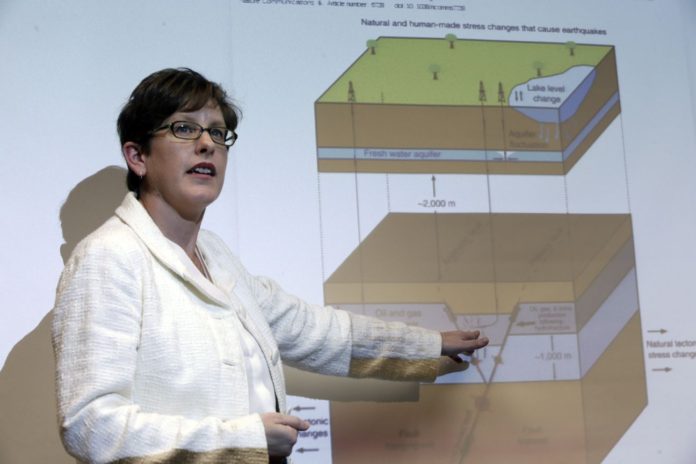The Railroad Commission of Texas on Friday announced it is starting proceedings that may lead to the shutting down of two wastewater disposal wells near Azle that have been linked to seismic activity in the area.
The commission the agency’s Hearings Division to initiate proceedings requiring the operators of two disposal wells near Azle, to show cause why the injection permits for the wells should not be cancelled and the wells ordered shut-in due to an alleged connection raised by new seismic research between ongoing operation of the wells and seismic activity in the vicinity.
The two wells at issue are Fort Worth-based XTO Energy Inc.’s West Lake SWD No. 1, Newark, East (Barnett Shale) Field, Parker County and Houston-based Enervest Operating L.L.C.’s Briar No. 1, Caughlin (Strawn) Field, Wise County.
“The Railroad Commission has in place strong rules addressing the issue of seismicity and disposal well activity, and it is incumbent upon us to apply these rules where and when appropriate for the protection of public safety and our natural environment,” Chairman Christi Craddick said. “In light of SMU’s study linking disposal well activity to earthquakes in 2013, it is important to assess this new information in relation to the continued operational safety of the wells.”
Using real-time monitors, scientists have linked a swarm of small earthquakes west of Fort Worth, Texas, to nearby natural gas wells and wastewater injection, according to a study released April 21.
In 84 days from November 2013 to January 2014, the area around Azle, Texas, shook with 27 magnitude 2 or greater earthquakes, while scientists at Southern Methodist University and the U.S. Geological Survey monitored the shaking. It’s an area that had no recorded quakes for 150 years on faults that “have been inactive for hundreds of millions of years,” said SMU geophysicist Matthew Hornbach.
When the volume of injections decreased significantly, so did the shaking.
The scientists concluded that removing saltwater from the wells in the gas production process and then injecting that wastewater back underground “represent the most likely cause” for the swarm of quakes, according to a study published Tuesday in the journal Nature Communications.
The scientists determined this based on where and when the earthquakes happened; computer models that track pressure changes; and company data from nearby wells. Hornbach said the timing and location of the quakes correlates better to the drilling and injection than any other possible reason.
“There appears to be little doubt about the conclusion that the earthquakes were in fact induced,” USGS seismologist Susan Hough, who wasn’t part of the study team, said in an email. “There’s almost an abundance of smoking guns in this case.”
Unlike other research that linked quakes to the injection of wastewater, the SMU study also sees a secondary link in another part of the drilling process, when massive amounts of brine is taking out of the ground with the gas, said study co-author William Ellsworth of the USGS. Removing the saltwater changes the underground pressure, Hornbach said.
The Texas Railroad Commission, the state’s oil and gas regulator, hired its first seismologist last year to investigate potential links between quakes and fracking after Azle residents asked the agency to halt oil and gas activities. The seismologist has not offered any conclusions.
While the SMU report remains under review by Commission staff, the show cause hearing is set for June 10 and 11, 2015 for XTO Energy and June 15 and 16, 2015 for Enervest Operating, L.L.C.
Meanwhile, SMU seismologists are still examining the cause of ongoing earthquakes in suburban Dallas. In February, researchers released preliminary results that showed a narrow fault line extending from Irving to West Texas. Researchers previously identified disposal wells as the source of seismic activity at the Dallas-Fort Worth International Airport. – Associated Press contributed to this report.






